In what may be one of the most hinted at announcements ever in the power meter world, PowerTap today is officially announcing their two newest products: The PowerTap P1 pedal based power meter, as well as the PowerTap C1 chainring based units.
These two units are in addition to their long-running and existing product the PowerTap hubs. Those products will continue in the market (and continue to grow), as the company looks to offer a fuller suite of power meter placement options. Heck, there’s still even the PowerTap PowerCal, for those at the super-budget end of the power spectrum.
I’ve spent a fair bit of time discussing the new products coming from the PowerTap team over the last long few months, including some brief hands-on time with samples here and there. That said, it won’t be till next month when I can start putting the pedal to the metal. Still, here’s everything you ever wanted to know about all the products in the meantime.
PowerTap P1 Power Meter Pedals:
First up we’ve got the $1,199US left/right pedals that capture your power output from both legs. The pedals are fully self-contained within the slightly larger pedal body size. There are no additional pods that hang down from the unit, such as is the case with Garmin Vector, Polar/Look Keo Power, and to a lesser degree, the ROTOR Power system. You can see the full system here:
You’ll notice that there’s a small battery compartment. PowerTap selected to go with a standard AAA battery. This battery will give the unit about 60hrs of battery life before replacement, which they note for the average rider is about 2 months. In balancing battery life demands and selecting a battery type – they noted that while they could have probably gotten more battery life out of some coin cell batteries, those would have been tougher to find globally.
With the AAA being ubiquitous, it makes it easier to find – even mid-ride. They noted they also looked at rechargeable options, but the tradeoffs there around battery life made it quite a bit less appealing.
The platform dual transmits on both ANT+ and Bluetooth Smart, akin to how some other power meters such as Stages and 4iiii Precision do. This means that you’ll be able to use it with ANT+ head units such as a Joule GPS or any capable Garmin unit. Similarly, with the Bluetooth Smart side of the house, you’d be able to connect it to phone apps as well as Bluetooth Smart power meter capable head units (potentially including the Suunto Ambit3, Polar V800, and Polar V650).
The unit requires no additional setting of installation angles, as it’ll calculate that automatically within 10 pedal strokes. You are able to manual zero the unit if you’d like, though there’s no auto-zero function within the platform since the unit is always in contact with the pedal (compared to the PowerTap hub based design where it auto-zeros upon coasting). Additionally, PowerTap has confirmed it’ll accurately support osymetric chainrings (q-rings) with the unit.
The unit will transmit total power, as well as left/right power at launch. It’ll do so with a claimed accuracy of +/- 1.5% Following launch, they’ll introduce support for tangential force power, as well as pedal position. Like other power meter companies, they noted they expect to see additional metrics down the road. They noted that with the 8 strain gauges implemented per pedal, and each strain gauge having a dedicated corresponding processor to it, they had more flexibility with respect to future metrics.
When I look at companies that have introduced additional metrics after release, a good example would be Garmin and their Cycling Dynamics, which was introduced about a year after the initial Vector release. The P1 pedals support over the air software updates via Bluetooth Smart and ANT+, which gives them flexibility on devices they can use to complete the firmware updates.
From PowerTap’s standpoint, they noted that “We could put a bunch of stuff out there, but if it’s not useful, it’s really a waste”. Which, is no doubt true. It’s one of the chief complaints I have about many of the new metrics that power meter companies are focusing on. These same metrics aren’t terribly useful in the grand scheme of cycling – at least not yet. No doubt in time they might be…but there just isn’t the scientific study backing up how to use this data to train smarter and race better.
From a weight standpoint, the complete pair comes in at 398g, which is a bit of an increase over a typical pair of pedals which will hover in the 250-280g range. On the pedal based power meter front though, Garmin Vector currently weighs 350g, so it’s a slight premium over Vector, but does do away with the pods.
Finally, the pedals are using Keo cleats (3-bolt variant). The units carry with it a 2-year global warranty. The current plan is for availability within “Late Spring 2015”. As a casual reminder on the definition of seasons, spring officially goes until June 20th. And again, the price is $1,199USD/EUR.
PowerTap notes they have no plans at this time for a single-pedal option. This means they don’t plan to offer a left-only or right-only option. Additionally, you cannot split-up the system either (meaning, two friends purchasing and splitting the goods).
PowerTap P1 Gallery:
Here’s a full gallery I’ve put together of a PowerTap P1 prototype unit. I’ve placed it next to a Keo Classic pedal (basically, the super cheap ones I have sitting around my house), along with a Garmin Vector. Additionally, I’ve included some shots on how it looks sitting on a bike.
Note again since this was/is a prototype unit, it’s plausible there will be tiny little changes along the way to production. I do greatly appreciate Derek from PowerTap in getting me a prototype unit to create the above gallery.
PowerTap C1 Chainring Power Meter:
Next up we’ve got the $699USD/EUR PowerTap C1 chainring based power meter. The unit sits on the chainring and will broadcast your total power to compatible head units. The unit is being sold inclusive of the chainrings, but not the entire crank set. This means you’ll be able to add your own cranks, assuming they are compatible.
Like the PowerTap P1 pedals, the unit broadcasts currently on both ANT+ and Bluetooth Smart, so it’ll work with virtually any power meter capable head unit or phone app out there. It’ll transmit total power, and then also transmit estimated left/right power. This is similar to how Power2max and Quarq units work. This left/right power isn’t measured, but estimated based on splitting the phase of the stroke into two portions.
The unit will support over the air software/firmware updates, so the company could potentially add functionality or address issues down the road. As an example, we saw competitor Quarq add and provide for a number of minor features over the years through their wireless updating capability. So even if PowerTap doesn’t have a set roadmap today – long term it’s definitely a good feature to have.
The C1 will ship with a 5-bolt 110 BCD (compact), primarily due to them seeing this as generating the largest demand in the market today. However, they’ll be looking at additional options moving forward – including potentially even doing their own crank arm.
From a chainring standpoint they’ll be offering three combinations: 50/36, 52/36, and 53/39. They’re offering a 36 instead of a 34 since the sensor doesn’t quite fit with some cranks in that configuration. At this time, there is not yet support for oval chainrings (osymetric chainrings). The chainrings being included are made by FSA.
The unit will utilize a CR2032 coin cell battery, which will net it about 200 hours of battery life. You can easily find CR2032 batteries the world around, usually for a couple dollars. Like the P1 pedal, the unit will include a 2-year global warranty. Unlike the pedal though, it’ll release a bit later – currently targeted for “early summer”, though it sounded like they may try and overachieve there a bit. And as noted earlier, the pricing there sits at $699USD/EUR.
Other Tidbits & Updates:
Finally, there’s a few other PowerTap related updates that are worthy of including somewhere. Some of these I’ve covered in part elsewhere over the last few months.
PowerTap Joule GPS+: You saw me preview this back in January. This is the updated Joule GPS that includes Bluetooth Smart support for synchronization with your mobile phone, including uploading of activities. The units will start shipping in the next week or two. The units will cost $249USD/EUR, and 175GBP. Additionally, they’ll be pulling in and including ANT+ bridging to Bluetooth Smart capabilities – a nice touch. Out of the gate the unit will support iOS, though they are looking at adding apps for Android and Windows Phone in the future.
Additionally, as noted previously, at launch the PowerTap Joule GPS+ will connect to ANT+ sensors, but not yet Bluetooth Smart sensors (only phones at launch). Within Q4 2015, upon a chipset firmware for the communications stack they’ll be enabling the ability to also connect to Bluetooth Smart sensors (i.e. power meters). Again though, for now it can connect to your smart phone, and will even do real-time downloading every 5 seconds of data to it.
New Disc G3 hub: This was announced way back at Eurobike in August 2014 (see here for more detail). It ultimately reduces the hub shell size, with a 30% weight savings bringing it down to 350g from 500g. It’s planned to start shipping in the next month or so (by mid-April). This is priced at $989USD/EUR.
–
With that – feel free to drop any questions below and I’d be happy to dig up and find the answers. As noted earlier, I’m expecting to start testing here shortly, and will release data and a full in-depth review following that (I know, that’s not an exact timeframe, but I don’t really have one until I have a unit in-hand). There are other power meter reviews due up before that, but you’ll see those shortly (Power2Max, Infocrank, Pioneer).
Again – thanks for reading!
—
Update June 25th, 2015: You can now pre-order the PowerTap P1 pedals and PowerTap C1 chainring units from Clever Training. In doing so you’ll save 10% with DCR Reader Coupon Code DCR10BTF. In addition, you’ll get free US shipping. Note that I have also recently received final production units of the P1 and C1 that I’m now testing for my in-depth review. I expect the P1 in-depth review in mid-July.


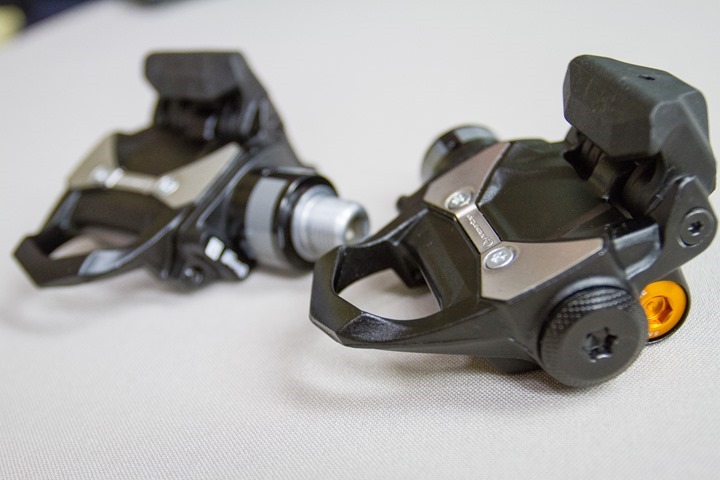
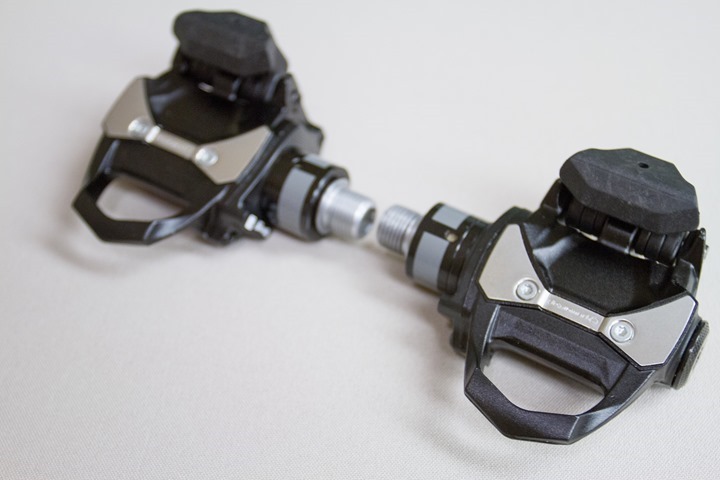
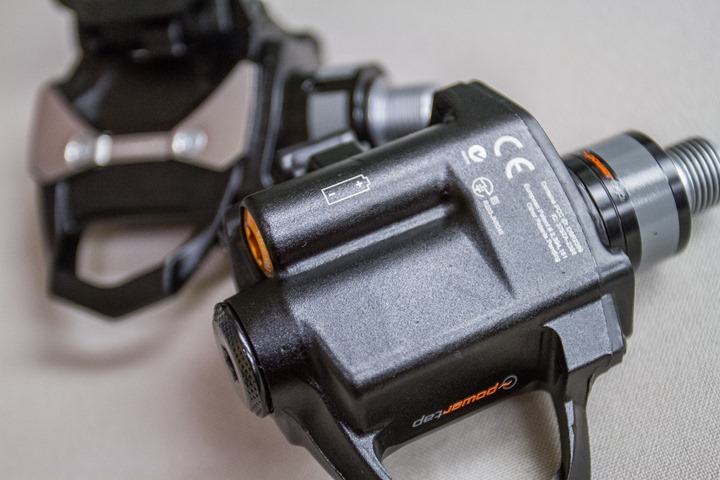
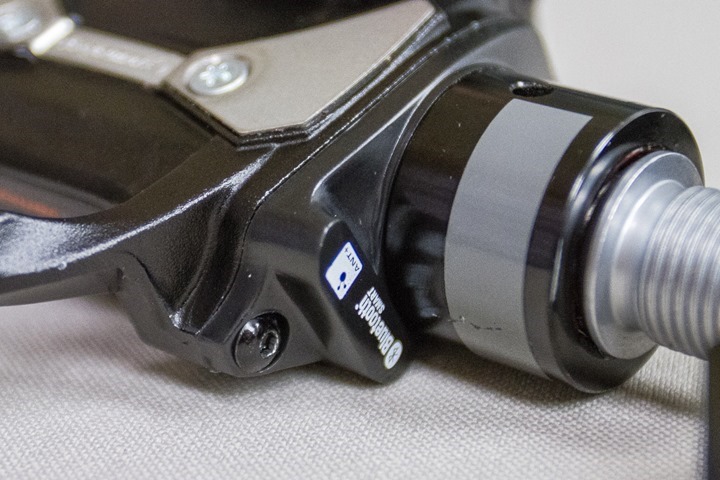
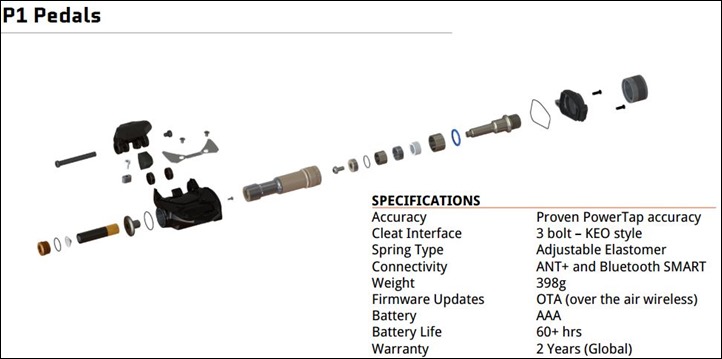
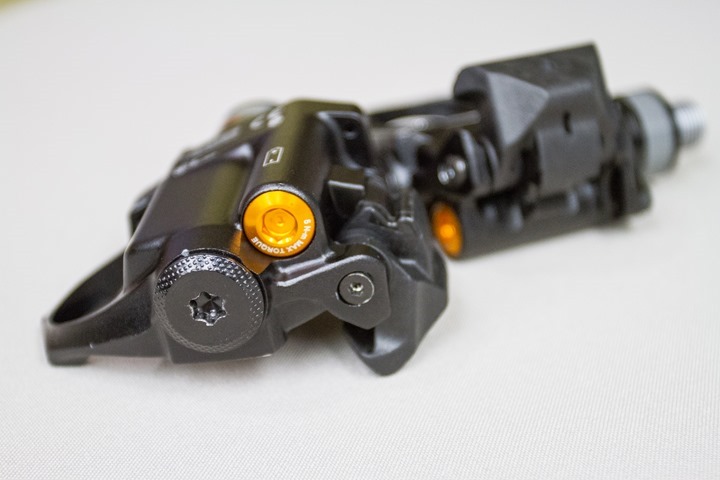
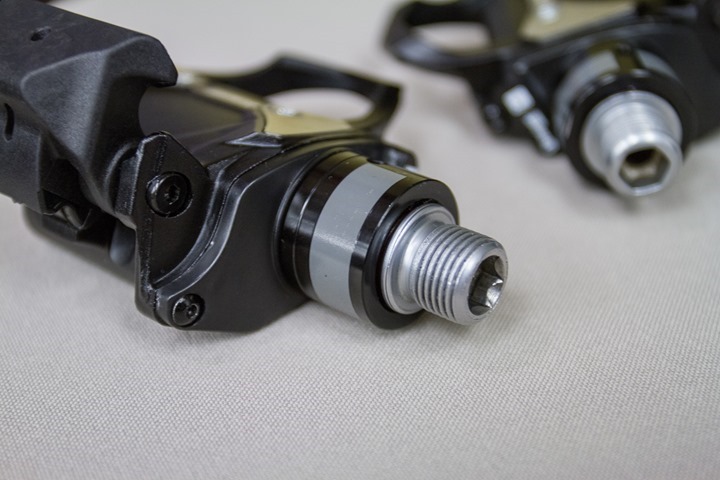

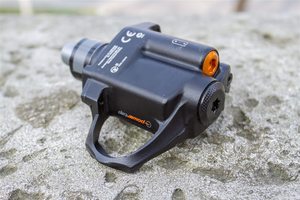
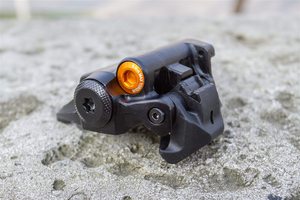
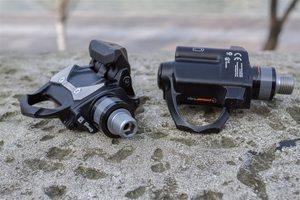
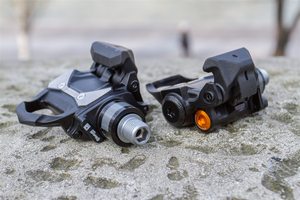
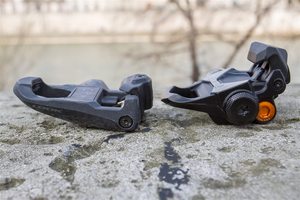

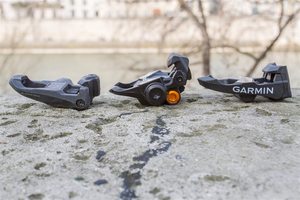
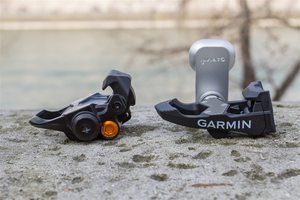
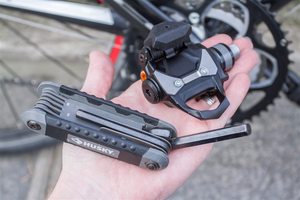

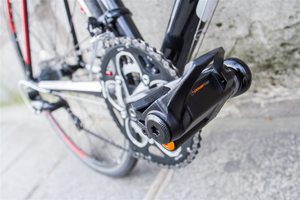
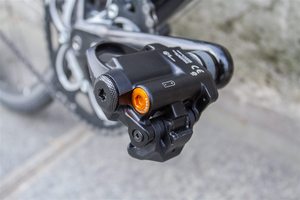
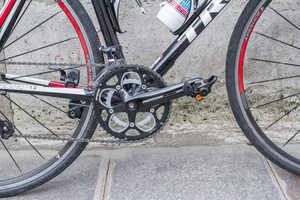
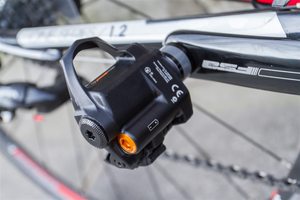

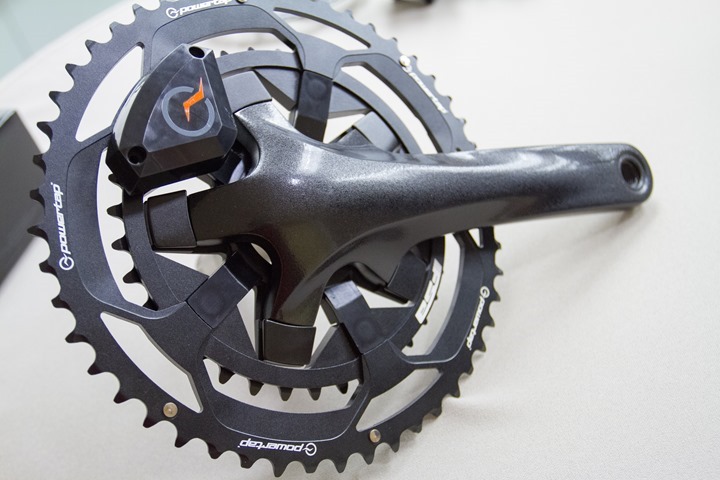
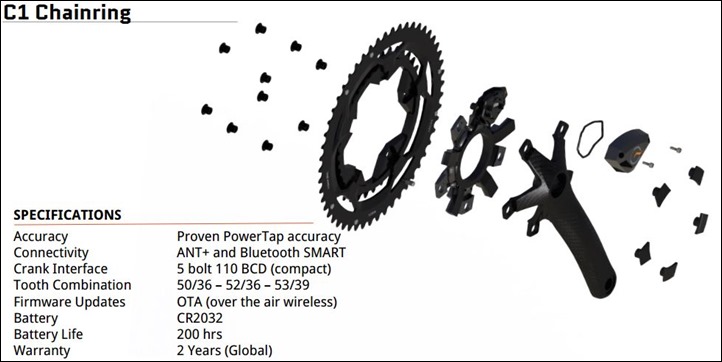
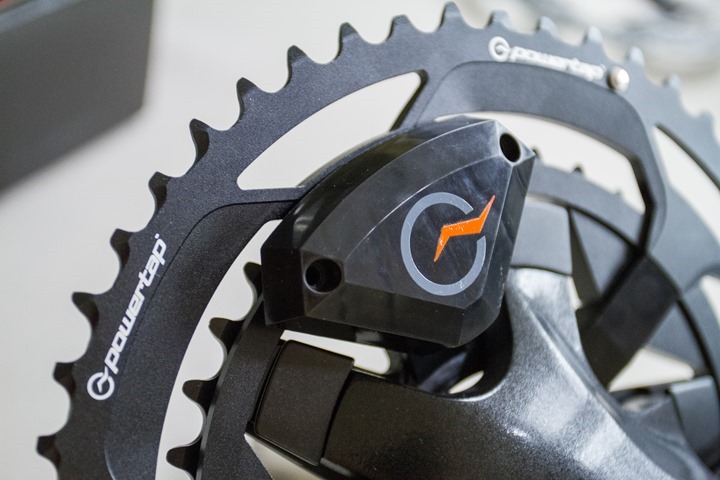
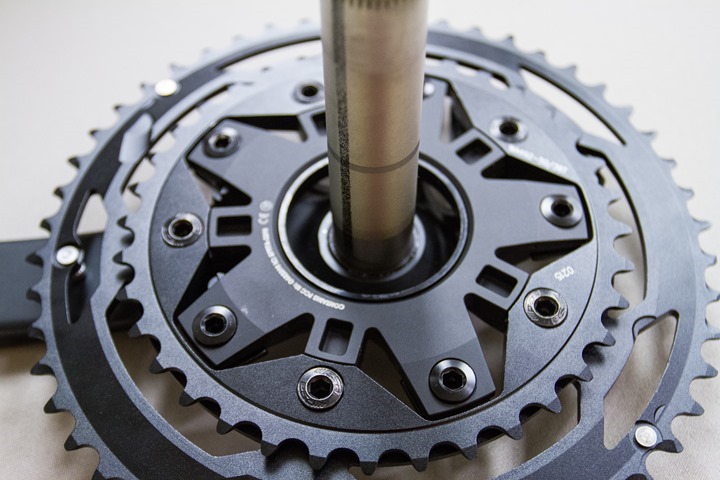
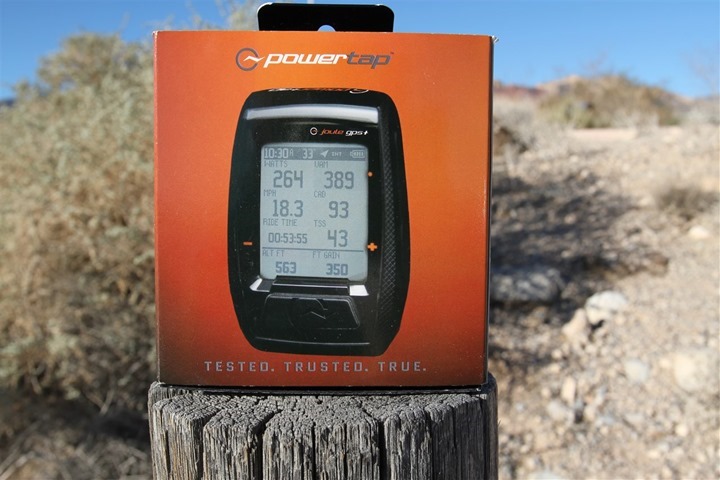





















Hi Ray, Any feedback on if they’ll offer a 4 bolt design for the newer generation of Shimano chainsets?
I am wondering the same thing and hoping they do soon!
Ray, I think you have a typo in the post title. I think it should be “PowerTap announces P1 Power METER Pedals, also PowerTap C1 chainring unitPower Meter” instead of “Power Peter”…unless Peter Piper is picking a pec of power. :)
Thanks!
What accuracy do they claim for the chainring units?
I see “Proven PowerTap accuracy” mentioned in the graphic.
Why would you pay double for the pedal units if these are just as accurate?
It’s a bit of a ‘what best fits the scenario’ type thing. For example, if you have certain chainring requirements, the chainring option won’t work. As for pedals, there are many folks that don’t use the same wheel for training or racing, and/or don’t want it tied to a specific hub.
If you wanted a 34 tooth inner, for example.
Any thoughts on what competitors will do in response? When will more pedal platforms be supported?
I suspect not much at this time (response). You’ve got a fair number of competitors in the market at similar or better pricing. It’s sorta a race to actually ship though. For example, 4iiii and Brim Brothers. Nothing really changes until someone actually moves forward and starts shipping product.
So Ray if 4iiii isn’t ready to ship for spring delivery, in that pricepoint I’m thinking I might just go with the Stages @ $400…
Any thoughts? and thank you!
I think 4iiii’s will be ready for left-only in the spring. Right-only I suspect we’ll see slip closer to June or so (still technically spring).
I suppose the bigger question is where is Stages at $400…
Hey Ray, Thanks for the heads up and great description. If you get a chance to chat with the the PowerTap folks, would you mind asking them if their pedals assume a constant rotational velocity in their power estimation. I’m one of those folks riding Osymetric chainrings, so my power readings get wonky with other pedal-based systems as the BikeBlather site explains. I’m also looking forward to seeing if the installation is as finicky as the Vectors. If it’s less finicky and works with non-round chainrings, you just found my next set of pedals!
Yup, we’ve been in talks about it :). They’ll have a firm answer by lunch for me on the pedals.
Another Great Article!
Will these or an other options work on a tandem? Looking to seperate captain and stoker power…
I’m assuming the same on the Rotor Q-rings… I might just get it they support Q-rings.
Any word on requirements to mount the pedals? I stayed away from Vector since they have strict requirements about mandatory torquing strength otherwise the numbers will be all wrong.
Having to use a torque wrench makes it so much harder to travel with the pedals, not to mention that even a small difference in torque causes accuracy problems on the Vectors.
If no torque requirements for mounting the pedals, then these look outstanding !!!
Ok, just got confirmation they will support q-rings, so all is good there.
I’ll get clarification on any torque requirements – I vaguely remember from my discussions there was non specific measured one, but I’ll double-check.
Hi. Is there any evidence what power meters does work with oval chainrings and what does not?
Virtually none support it. Only PowerTap hubs, and then recently the ROTOR power meter.
Start here: link to bikeblather.blogspot.fr
The challenge is that the power will vary based on cadence.
I’ll believe it when I see it, on both the rotor unit and the PT pedals reading correctly with non-round rings. That would require fairly accurate detection of within rev angular velocity variations. Show me the data.
Power2max claim to support it, as you mention in the comments to your in-depth review.
I guess if it works with Q-Rings (as you noted they said it supports), it must work with Osymetric chainrings? It would still be nice to know if it samples instant rotational velocity and not just using average rotational velocity. After all, not all non-round chainrings are nice symmetric ovals. I would be happy to do a test ride on Osymetrics with them– recording the same ride on two different Garmin heads alongside a power tap G3 hub.
I had my Back To The Future moment when I read ” … way back at Eurobike in August 2015″!
Such a great movie. Also…a quick fix. ;)
Looking forward to someone producing an SPD story.
Agree, I have my MTB and touring bike with SPD and since my touring bike has a Rohloff with carbon belt I can only have a crank or pedal power meter. Since I did not want to buy new shoes for my racing bike it got SPD too.
So yes when are those SPD power meters coming?
SPD…..I’m surprised more triathletes haven’t moved to SPD. A high end pair of carbon soled MTB shoes work great in transition. No more slipping and sliding, just run out of T1 with your shoes on and do a CX mount. I use on pair of shoes for road, MTB and Tri.
Interesting price point on the crank option but surprised they’ve gone 5 bolt when the market seems to be settling on four as the ‘standard’
200 hrs on a CR2032 vs 60hrs on two AAAs? Why do the pedals need so much more juice?
you’d be able to connect it to phone apps as well as Bluetooth Smart power meter capable head units (potentially including the Suunto Ambi3, Polar V800, and Polar V650)
As a very frustrated Stages/V800 owner I would suggest a stricter stance in terms of hinting at compatibility of BTLE power meters with Polar devices. None except their own are currently working and there are no clear timelines on when that will change. Just yesterday there was another announcement of several promised roadmap items being pushed further back in the timeline (Q3).
I would guess the reason is that pedals require a lot more computations to realise Power from them. They mention 8(?) strain gauges per pedal and each one has its own processor. Still, they could market it as the only pedal out here with a built-in feet warmer …with all that processing going on ;)
Great news, thanks Ray! The more choice, the better!
Would it be technically feasible for this kind of pedals to measure your time spent in and out of the saddle?
It would be nice to see in the plot after a climb, when I stood up and when I sat and in the long run maybe find out what’s the most efficient combination of in and out of the saddle during a climb for me?
Do the pedals also measure cadence?
Not very thrilled about the AAA batteries in the pedals, as currently everything on my bike runs on CR2032, which are smaller, lighter, hold longer and are as easy to find here in Europe as any other kind of battery.
Yes, technically possible (Vector will do it with Cycling Dynamics shortly). As for cadence, yes, it measures that.
On the batteries, at least for me in Paris, I can find a AAA easier than a CR2032. Meaning, every grocery store and gas station carries a AAA, not so much for a CR2032.
The AAA battery housing just looks awkward. It adds physical size and weight to the pedal that seems like a CR 2032 battery would streamline.
Gunnar- thanks for the comments. We chose a AAA battery because they are far more common, are easier to swap and the added weight (7.5g vs 3.2g) didnt seem like enough to outweigh the other benefits.
Justin: how to the pedals measure cadence? Magnet? Accelerometer? Gyroscope?
So why no AAA battery for the C1?
Not sure what happened there :)
In reply to Michiel, I would guess that perhaps the decision to go with CR2032 for the C1 was partly due to form factor.
That said, I still don’t quite understand the decision to go for AAA – if you run out of battery on a ride then, assuming you’re not carrying a spare, it’s relying on having somewhere to buy a replacement in the first (not happening on most of my rides unless at the beginning or end) and actually bothering to stop and replace it anyway (not sure I would, just wait until I got home). Given the difference in run-time between AAA and CR2032 under similar loads i’ve had experience with, you’re also going to be running out far more often (finger in the air, at least 3 or 4, seems like more), which I would find vastly more irritating.
In addition, are people buying CR2032 going to be just buying one at a time anyway, and one would have thought that either way folk will carry a spare with them….. just seems a really weird design choice to me.
There are no rechargeable CR2032 batteries so running cost gets expensive if you ride a lot. I am replacing my Power Tap hub CR2032 2 or 3 times a month – must replace before every long ride 200 km+ otherwise it might run out in the middle.
Honestly, if you’re running out of CR2032’s on a PowerTap hub 2-3 times a month, the unit is defective. That’d mean you’re doing like 600 hours or so of riding per month. There’s only 720 hours in a given month. :)
Definitely ring up PowerTap to have them take care of that.
Any info on swapping out chainrings on the C1? Can you swap any rings on?, Only swap for new FSA rings?
Cheers
Jamiel- Thank you for your comment. Because of our one-piece chainring design you will only be able to use our PowerTap chainrings. Users will be able to swap same tooth profile chainrings in the field but switching between tooth profiles (e.g.53/39 to 52/36) will require recalibration at the factory.
Hmmm…that implies there will be no way to field calibrate the torque slope. Will the torque slope at least be user check-able, like a PT hub?
And what about those chainrings pricing? If I utilize at least one set per season, it might be a key factor.
Another great article, Ray. I’m really intrigued by a new pedal-based option coming to market. I’ve had my Vector setup for about 9 months, and I’m still back and forth with Garmin about frequent dropouts in power/cadence data. My now-ancient Powertap never had any such issues.
Out of interest Edward, what display unit are you using? I have the same problem with my 910xt & stages which I’ve given up on fixing
Indeed, if you’re on a FR910XT…it’s unfortunately mostly the FR910XT’s fault. Lots of threads on it for primarily triathletes with it in the aeorbars and with Stages/Vector and to a lesser degree Quarq.
As long as my kids are asleep I have nearly zero dropouts. As soon as they’re up and messing with tv and xbox remotes the dropouts start immediately. It’s hard for me to blame my 910 for interference it has no control over.
Oh, I’d agree then – it’s definitely the kids fault. That’s why I got a dog.
How is the dog, Ray?
And why no dog in any pics running with you?
The dog is good. As for running with the dog…I’m thrilled just to get her to walk 100m down the street without stopping every 1 meter.
Oh, now you are in Paris and everything is in meter?!?! :-)
Thanks for the post. Definitely a good heads up in terms of new choices. It definitely makes the pedal option seem more realistic, and also means if you use LOOK style for racing and commuting, you can get power metrics for your regular commute.
Hey Ray,
Any word on weight for the C1?
Added weight is 150g
Price,Price,Price!!! Doesn’t really matter how good of a product these are, when they are out of price range for the average cyclist. Waiting on 4iii and watteam hoping they don’t disappoint .
Aside from Watteam, the C1 is set to be the cheapest power meter on the market to capture full left/right. Ultimately though (and like you alluded to), 4iiii’s, Watteam and everyone else still have to actually start shipping and prove accuracy (just as PowerTap has to do).
Thanks for the Update. Can you think about a future comparison chart matrix of power meter devices and how they relatively compare to output watts.. thinking this topic will be very hot this summer !!
Any comments on calibration and auto-zero with regards to the C1? Presumably installation will require quite precise tightening of the chainring bolts to a specified torque.
Can’t wait until you get these units for review.
The C1 will support auto-zero similarly to the PowerTap hubs. When the unit detects coasting (no cadence) there is no driving load on the chain and the unit will perform an auto-zero.
Even torque will need to be applied to each of the chainring bolts.
What’s the tolerance on the “even torqure” that the chainring bolts will need?
Can you explain more how it determines no chain load? If it has drifted an amount requiring a rezero, isn’t it possible it could mistakenly sense a load? How about backwards pedaling forcing a zero like Quarq?
Another look pedal based option? Yawn. And 60 hours is way too short to replace yet another battery. Speedplay please. At least these all bring BT Smart and ANT+. Pricing looks very good on the C1 — but the success will really depend on 4iii. It was $639 with your discount for clever training for left/right directly measured by 4iii. So I guess it comes down to if you are picky about chainrings or want carbon cranks
every thing looks nice on paper… no pods anymore, easy installation, but the AAA Batteries are the showstopper
So keeping in mind that CR2032’s wasn’t an option due to not having enough power for what they wanted so they would have had to go with a hard to find CR variant, what would you have selected instead?
Interesting news … had been waiting. :-)
What’s the stack height of the P1 pedals? Looks a bit higher than usual, but I may be wrong… hopefully.
Takura- thanks for the question. Stack height is 14mm
I assume 60 hours is with regular alcaline cells. You can buy lithium AAA cells, and they should last substantially longer (at a price premium).
Yes, if you’re looking for questions for the PowerTap folks, I’d *really* like to know the answer to this.. Battery life with lithium cells instead of alkaline.
The price premium is negligible if you get a 2x better battery life. Not to mention, you’ll save about 4 grams per battery (but who’s counting…)
Is Cycling Dynamics on Garmin a private ANT feature (like Running Dynamics)? In other words, if the same metrics are added to these PowerTap pedals, will we actually get Cycling Dynamics on Garmin head units?
It is indeed private, so no luck there at the moment.
Will the pedal be usable with Q-rings to generate the right data. I was told vector dit not…
We’ve had some discussions on that, and they’re getting me a final answer this morning.
Ray do you know how “thick” those pedals are in comparison to Vectors or any other look pedals, they seem to add quite a lot, seems like a great answer to finicky Vector installation and pods that are braking if you change them a lot, but they might be to thick for some 4 corners crits when you need to pedal through the corner, especially with some bikes where BB is a little lower. Can you measure outside thickens at the spindle?
Sebo2000- thank you for the question. A lot of additional info is necessary to determine actual cornering angle for your bike such as; tire size, BB drop, crank length and Q-factor. I would say worst case is 16 degrees of lean, with the crank all the way down on the inside. 175mm crank, 75mm BB drop, 147mm Q-factor Crank. I hope this helps to give you a baseline to compare your situation against.
Thanks for answering, my crank is 172.5mm , q-factor 147mm, BB drop is 70mm tires are 23mm. How did you calculate 16 degrees that sounds quite impossible, did you mean 74 degrees? Do power tap pedals add more to the stack or to the bottom of the pedal. I’m very excited about no torq wrench and how easy it sounds to install them.
Will the C1 be able to be run without the large chainring for cyclocross? Maybe with a bash guard?
Pity it requires their own chainrings – would be a good power solution for CX1
Rich- C1 features a one-piece chainring. So, unfortunately, the answer is no.
Justin – A 46/36T FSA chainring combo for Cyclocross would be great!
A little shocking they don’t offer the true compact & so popular, 50/34 option. That’s unfortunate.
Scott, thanks for the comment. We saw interference between the inner surface of the chainring and some crank spider tabs with a 34T inner profile. If you look at the difference between a 34T and 36T it is only 5% and I think most people are currently running larger cassette ranges to get a lower low gear. I could definitely be wrong but would be surprised if most people could tell the difference between a 34 and 36T inner chainring.
This is a nice little web calculator which I find useful to compare gearing:
link to gear-calculator.com
(this link will show 50/34 vs 50/36 on 11 speed)
Your customer base isn’t “most people”.
A 5% difference is huge when climbing an 8%+ grade, of which we have many in the Bay Area. I don’t want to have to run an MTB cassette with the consequent huge jumps between cogs.
Any chance of doing a replacement spider a la Quarq? I had hoped to keep my Specialized carbon crank and 34T small ring.
5% is a lot when you are at your max torque. But I run a 46-36 front with 12-27 rear and really Ike that. The huge jump with 34-50 is cumbersome. I think overall 36-50 is a better choice. Think about giving up the 11 cog to increase range while keeping the 16.
Out of interest, do the pods often break on Vector and Look power pedals?
No. Not during crashes anyway. On Vector they had some initial pod breakage problems with folks overtightening without washers in the first months. They’ve since changed the materials (and will swap out anyone’s old pods for free on-demand).
I don’t believe I’ve ever heard of anyone breaking a Vector pod during actual use. The only Polar pod I’ve heard of being broke was actually mine, but it was when the entire crank-arm fell off the bike at full speed, so I can’t exactly blame the pod for breaking then.
I’ve broken two, and shredded the plastic connection that “wraps around” once. YMMV.
While riding, or elsewhere?
broke the pods while swapping the pedals, shredded the connector while riding (racing, actually)
I know of two people who broke pods, and at least one was going over a speed bump whilst cornering a bit.
I broke a pod going over a speed bump at low speed coming out of a car park – snapped it straight off and left it dangling with the connector. I had my left leg straight so pod was pointing backwards, but as I dropped down from the speed bump it got snagged at the back and snapped off. I now make sure my pedals are level when going over these things.
I like the garmin approach of separating the electronics from the pedal hardware. That makes it easy to upgrade or otherwise replace the pods, or vice versa.
The pedals are an improvement over Vector in terms of getting rid of the pods, and setup, but AAA batteries, low battery life, and assuming those weights are without cleats they are almost double the weight of the top of the line keo pedal. They look really sturdy, but I would imagine there is room for weight loss in that design. Maybe an additional option 100 grams lighter with a slimmer and longer lasting battery, and better looks too. I can’t see putting those pedals on a top of the line road bike based on looks alone.
I’m hoping this might trigger Garmin to actually do something with their cycling line. The head units are outdated and bulky, and their acquisition of Metrigear 5 years ago has produced essentially one product that is flawed in numerous ways and very expensive.
Based on total anecdotal evidence, when it comes to the new market entrants I’ve seen a lot more Stages arms in the wild and very few Vector units. I’ve had my Stages arm for nearly 2 years, and I don’t see a better option in terms of price, weight, and performance. I would like to have left/right, but its not really a dealbreaker.
Any idea what the rollout/launch schedule will look like?
Late Spring – P1
Early Summer – C1
Hi Justin
Given that it’s almost the end of April, any update on “late Spring” and also a UK release date for P1 pedals?
Many thanks
Dermot
Any idea who is making the pedals for PowerTap? They look a lot like the Xpedo Thrust E units that are also being released “soon.”
They’ll be made in their Madison, WI facility (seen here: link to dcrainmaker.com)
It’s not the perpetually soon Xpedo (it’s been in the works for quite some time).
Thanks Ray. Out of curiosity, could you use the pedal on a spin bike? Would be cool if you can interchange them between your bike and spin bike if you use both for training.
You can most certainly use the pedals on a spin bike.
Thanks Justin.
What are the weights for the C1 chainring/spider setup?
The additional weight of removing your chainrings and replacing with the C1 is roughly 150g. Thanks Bryan.
Hi Ray, do you know if pricing for the G3 hub will drop after the new power meters start shipping?
Pricing on the hubs will remain the same. Thanks for your inquiry.
So are the chainrings user-replaceable? If I wear them out can I order a new one and swap it at home with an allen wrench?
Also, it’s not massively compelling to me until they fit the new Shimano standard. A big part of the value proposition here is to use cranks you’ve already got – and there’s a lot of 4-bolt road cranks out there.
The pedals, battery life aside (premium batteries for 100+hrs of life is a-ok), are super compelling but reduced cornering clearance scares me.
I’m curious about the chainring replacements or just using existing rings.
he only issue I can think of is that the power meter acts as a chainring bolt spacer, so you may move the rings slightly outboard and need longer bolts.
The biggest benefit I see is having to re-purchase the least amount of gear and being able to bolt power on to an existing setup.
*Hopefully*, FSA will produce a 46T ring for CX that has the anti-drop pin in the right place for the C1!
With no 50-34 being offered, would the 50-36 be the natural replacement?
Trent- yes it would.
Any plans for Shimano cleat options?
Heh, if Vector is anything to go by, I wouldn’t hold my breath.
Ray
Any news on high speed recording on the head unit for Track application? I know that powetap have a high speed track hub does the new upgraded chip set on the head unit support this yet?
Standard ANT+ head units support up to 4 Hz data transmission. We will be selling the high speed PowerCap soon. Stay tuned…
Can’t wait to see the test results. I wonder if the hub would measure lower power values than the pedal or crank unit due to loss in the drive train.
So these new power meters are dual Ant+ and BLE. For their hubs you can only get an Ant+ powercap to use with the hub or a BLE powercap to use with the hub. Is there any plans to get rid of those two options and just ship a dual capable powercap?
Indeed.
timeframe?
Are these rings 10 or 11 speed compatible? In other words, will they work with ultegra 6750 cranks?
There is such a small difference between 11s and 10s (or between 10 and 9, or 9 and 8 etc) on the front, that in practice you wouldn’t be able to tell the difference.
In theory you might be able to notice a slight rattling, but in practice that doesn’t happen for me (my beater runs a mix of 10, 9 and 8s parts).
Alex- the rings are 10/11 compatible just as all of the newer FSA rings are.
Thanks
Does the C1 have temperature compensation built in?
Ginster- thanks for the question and its a good one. Yes, the C1 has temp compensation in the form of auto-zero taken while coasting.
That’s not exactly what temperature compensation is. A good temperature comensation design will minimize the zero offset drift due to changes in temperature, and thus minimize the need to re zero the offset while riding. Auto zero while coasting can be problematic as seen in the SRM scheme.
Looking forward to seeing your testing.
I am sure you have considered it but I would love to see readings from the pedals, chainring and a PT hub at the same time…..and if it’s possible to put the C1 on an FSA 110BCD crank with an SRM already mounted, seeing that at the same time as the others would be even more interesting.
Do the pedals have a rider weight limit like the 90kg of the Vectors?
No rider weight limit.
Excellent thanks!
Justin/Ray-
Can the the new MTB hub take an XD driver for a SRAM 1×11 setup?
Any possibility of modifying the chainring meter to work with single ring setup?
Any plans for an MTB 2×10 crank meter?
Tom- thanks for the questions.
Yes, we will be selling a version of the hub with an XD driver.
There is potential to go to a single ring setup but we have not started on it yet. We will be discussing multiple iterations of the product in the near future.
Thanks for the news! Will the C1 be compatible with my Campy Super Record 5-bolt 52-36 crankset?
Thanks for the write-up, Ray.
Regarding the new Joule head unit, I’m interested in the bridging. Can someone with an ANT+ power meter on an indoor set-up get real-time data throughput via the Joule to a Bluetooth device like, say, an iPad running TrainerRoad?
Joe Public- you are a forward thinker my man. Yes, it will work assuming the 3rd party service you are using is following the standard BLE protocols. You will be able to pair ANT+ power meters to the Joule GPS+ and it will rebroadcast services using BLE. It will pair to the 3rd party service as a power meter and you will be off to the races.
Good to know. Thanks for the response, Justin.
I’ve seen a few people ask about Shimano 4 bolt options (including me), but no answer. Is this a taboo question or something? :)
Just means nobody has provided an answer yet…
Not at all taboo. We targeted the 5 bolt 110 BCD as it represented the largest market and gave us the ability to do a full range of tooth sizes on one sensor platform. The path of greatest compatibility if you will. We are definitely looking at other bolt configurations for the future but have a razor-like focus to dial everything in on the products we just announced.
Not sure if I’m duplicating but I didn’t see a mention about the C1 working with Campy
The C1 works with a 110 BCD crank, so it won’t work with a Campy crank.
I am seeing a lot of mixed messages, from many pubs such as road.cc: “It’s a two-part system that bolts onto any standard compact chainset with a 5-bolt 110mm bolt circle diameter. That means Shimano/Campagnolo road compacts before the latest 4-bolt standards…” But no one is answering the question specifically. Will the C1 work with a compact/midcompact 5-bolt Campy crankset? Insights anyone?
The C1 is not compatible with Campy. Campagnolo’s 110 BCD has one of the five bolts positioned some mm’s off the circle, which makes using other chainrings impossible.
Campy offsets one of the chainring bolts on their more contemporary 5 bolt compacts, which renders them incompatible with standard 5 bolt 110 BCD chainrings.
Very interesting. I’m a PowerTap hub user and am happy with the product. I’m also somewhat of a sucker for new products. That said, is there any rationale for replacing a perfectly good hub with either new system? I can’t think of one (save for generating a bunch of a non-actionable pedal-based data).
Any news on if the cleat versions will expand e.g. Speedplay pedals?
I would buy tomorrow if they were available for Speedplay
(I suspect it would be very hard though – with nowhere to put a AAA battery on a speedplay…. )
Will the new hubs be sold as wheelsets, or hub-only?
Can’t wait to get one on my new Defy!
They will be sold as hub only initially.
Why no 130BCD option?
Sure the C1 comes in the standard 53/39 but generally those who use standard chainrings have 130BCD.
Ray, Any update on the Brimm Brothers?
I met with them briefly back about a month ago in Dublin during an unrelated trip. It sounds like they were just starting a production run and believed they had solved the issues they had stumbled upon last fall.
Honestly I think the weight is a non-issue. There’s plenty of midrange road pedals that weigh as much as the vector and anyone who believes 50 or even 150g on a pair of pedals make for a measurable difference, might as well send me their bank account credentials for a free security inspection :)
Looks very very interesting if you ask me.
If 150 g is a non issue then so is 300 and so is 450. Or is one of the three 150s more important than the others? I assume you’re therefore riding a steel bike rather than carbon (as I typically do). But the market obviously disagrees. People are spending well over $1000 to save that amount.
Note it’s only 50 grams between the PowerCal and Vectors, it really only looks like a big difference if we forget the pedals are just a single part of a system that includes the cyclist or, if you prefer, a drop in the sea.
As for the comparison with a pair of high end pedals: 150 grams on an 12% incline make for a difference of half a watt.
I know some people will worry about the single watt or even less, but that kind of attention to detail is only warranted for racers, and only when all the other venues for buying performance are exhausted – in that case I guess they’ll have to decide if it’s better to race with their PM and collect the data, or leave it at home to save the last precious second.
FTR I own a steel beater with fenders and panniers performing a variety of roles, including training if necessary, while my ‘nice’ road bike is carbon, because I happened to find a good deal on one.
The carbon one weighs about 8 kilos, and if someone walked in and gave me a few thousand dollars of credit to spend on bikes, I’d rather buy a third bike than shave weight off that one.
Hi Ray,
The C1s look really interesting. Great to see another ‘dual’ (ANT+ and BTLE) product on the market. “Tear those walls down” to paraphrase a well known political figure.
I – along with many others I would think – would be really interested in a full review of the Polar/Look Keo BT pedals. This would then allow a comparison of how the Polar system stacks up vs Vector vs the C1s (once released).
Justin (PowerTap),
can you share any details on whether the C1s will work with the Polar V800 and/or V650?
Cheers,
B
Sorry, I was referring to the P1s, not the C1s in my comment above.
For testing of the Polar Keo pedals, my plan has mostly been to do that with the V650 testing, of course, that’s not yet power compatible. Putting me in a pickle. The thing is – at that price point, I still don’t see it as anywhere near competitive.
As for as whether the V800/V650 will work with PT’s solutions, Justin may have tested with that combo.
We have not yet tested our new platforms with the Polar head units but if they are compliant with BLE standard protocols it will work because we are.
Hi Ray and Justin,
Thank you for your quick replies.
Justin,
would you be able to test compatibility with V800 and other head units and publish results at some point? Might facilitate product up-take of the P1 and C1.
Cheers,
B
Point taken, ideally test Polar Power pedals along with V650. Polar might not be competitive in terms of pricing, but pedals are on the market for several years (pedals, PODs are new) and proven quite reliable. Powertap P1 still need to become available, proof to be reliable, and proof consistently good quality of data. V650 should address power mid-April.-)
Yes, agree: the BT Polar Look Keo should be a polished version of their first model which used the “Wind” transmission format.
The Polar Look Keo pedal could also be tested with the V800. As far as I know, the V800 supports pretty much the same power data fields as the V650.
Hopefully Polar can stick to their planned power implementation for the V650. Each day that passes by costs them market share.
I’m hoping it will work. I’m very close to preorder (p1)…
On the chainring model, has Powertap mentioned what happens if you break or wear out the rings that come with it how much will replacement ring sets run? I’ve actually managed to damage rings before by various means,and I’d hate to have that sort of accident cost me the full price of the system…
Replacement rings will be available ($ TBD) Users will be able to replace their rings with rings of the same tooth combination (i.e. 50/36 to 50/36). It recommended that users send their power meters in for recalibration when swapping out the rings because of strict torque specifications but is not required.
Justin,
Do you have plans for single ring applications, like the CX1 for cyclocross? Since the C1 has a 110 BCD, would it be possible to install an narrow/wide chainring like the SRAM or Wolftooth?
Based on that comment, will the owner of a C1 power meter be able to swap out to a different chainring set or is a separate powermeter needed? Example, one bike someone might want 52/39 and on a separate bike 50/36. Ideally, it would be good to swap the meter between different cranks and go ride.
Do the P1 pedals go on with a Torx wrench?
Doesn’t look like a normal pedal wrench will work, nor standard hex. Will this be provided with the pedals and what degree of tightening is needed?
Looking at the pic it’s the same hex as a normal Look pedal
The pedals go on with a normal 8mm hex.
Indeed, and perfect timing on the question. I’ve just put together a big gallery of new photos here: link to dcrainmaker.com
Thanks a lot Ray for the post and the pics, both the C1 and P1 definitely looks good to me and will fit my power needs. Currently training with a iBike Newton with updated firmware, properly configured and not liking the power spiking all over. Hopefully Powertap will make C1 and P1 eligible for the trade-in your power meter 30% (or more) discount when they are released.
I really like the P1 pedals. They sure look rugged, built to last years of the beat down they’ll have. Even the cleat plate can be replaced! They will be a sure winner.
Looking at the exploded view of the Chainring Power Meter, do you think it would be possible to use both crank arms from another set and swap out the right crank arm on the PowerTap with your own? I wonder if that at least might be an option if your existing crank is also FSA.
You weren’t kidding a few months back when you said this would be an interesting year for the power market.
thanks a lot for that notation:
“From PowerTap’s standpoint, they noted that “We could put a bunch of stuff out there, but if it’s not useful, it’s really a waste”. Which, is no doubt true. It’s one of the chief complaints I have about many of the new metrics that power meter companies are focusing on. ”
It makes me angry, why should companies limits our options and “freedom” of choice? Because customers are stupid and should be protected from our self?
;)
I wonder which features they’re looking at as useless?
Something the useless can be used in a unexpected way. That’s not up to them to decide that for us, they could release a API or parameters of their output so other can dig into it at their own terms.
But that’s just “prohibed”, maybe “soon-to-be-outlawed” if one are paranoid enought. ;)
It’s very difficult for companies to decide the real value of their products, so they have to limit options for customers to increase their own bottomline.
You’re over-thinking it.
The simple reality is that companies have to spend time and money to ‘create’ these metrics. That involves testing, etc… It’s not free. Development never is. Either they spend time/money on those metrics, or they spend time/money making their products available to a wider audience.
Most of these metrics (i.e. most of the Cycling Dynamics pieces on the Garmin side for example) have no real useful basis at this time, and no 3rd party support. Obviously, it’s chicken and the egg. But I don’t entirely disagree with them on some of them. Why create single-vendor standards? Why spend time on something that nobody really uses beyond “ooh…geeky!”? And finally, why spend time/money on that versus something else that more consumers want?
While I agree with Ray that even just releasing an API requires development and therefore money that might be used elsewhere, free access to all the data that a power meter captures as proposed by Henri would allow anyone to dive into their data and possibly come up with and prove utility of new metrics … and thereby reduce development effort of the manufacturers and also possibly accelerate research.
So, one explanation for the current situation that comes to my mind is that “they” are attempting to be exclusive providers of new useful metrics by restricting access to data in the belief that that might give them some competitive advantage if they are the first to come up with an useful metric and get their copyright or some patents on it. “They” might also fear that releasing data would also make hardware design secrets public that they want to hide from competitors.
Please someone correct me if I am wrong, but the current situation seems that e.g. Pioneer displays tangential power vectors on their cycling computers that could potentially be used for researching new metrics and allows browsing through the data on their CycloSphere site, but provides no method of exporting more than just the single power values; Garmin seems to allow exporting of only their metrics but doesn’t even display more detailed power data than their own metrics.
Agree that putting out a bunch of new metrics is likely waste. The alternative, just simply releasing data like tangential power vectors for everyone to analyze and utilizing the crowd to come up with new metrics unluckily seems unrealistic at this moment. If may be some lawyers could come up with some NDA and open source conditions for API access that might give those manufacturers enough rights to make it worthwhile for them?
I really wonder at how good the Pioneer detailed power numbers are. For example, suppose I apply force along the direction of the crank (pushing down at the bottom of the pedal stroke). A crank arm is extremely stiff in this direction. How much strain is it going to detect? Additionally you need a precise determination of crank arm angle. How do they measure this on rough roads? Obviously the Garmin Vector is best positioned to provide this sort of analysis, since the pedal spindle is cylindrical, and the deflection magnitude for a given applied moment will be the same whatever the direction of the applied moment. It’s disappointing that Garmin doesn’t provide this yet.
How about the power reported by P1 and C1 compared to hub? I mean, should we expect higher values when using P1 C1 than rear hub or the new meters have been tuned to match the G3 figures?
cg- yes, generally speaking, you should see higher power from a power meter that is measuring power from a location closer to the point of origin. The degree to which to see higher power is the unknown. I dont know of many mechanical machines, including the bicycle, that are 100% efficient, which means there are losses to friction in there somewhere. It should also be stated that no two power meters will ever match up perfectly; data transmission timing, power meter architecture and location on the bike will all lead to slightly different outputs of force and speed. That said, I have done and im certain Ray and several others will be doing a comparison test of all three of our power meters in the near future and I dont want to be a spoiler. Stay tuned…
On the other hand, if you calibrate both units to the same standard, for example an SRM science unit or a Powertap hub, then they’d not read differently (for the same drive train losses).
Chain-gear efficiency is around 98% So taken the fact that most power meters work around a 1-1.5% margin you will not notice much difference. Just a few watts, that’s it. Suppose the powertap hub is 1%+ in deviation and the C1 or P1 1% in the minus… you will never see a difference in the readings. Only in perfect conditions and 100% correct power measurement you see a difference. Under normal conditions it could all disappear in statistical noise.
Friction-Facts.com typically measures in the 3-6 watt range for even the best chains. I really recommend buying their reports. That said I agree: it’s still within the range of error for two separate power meters. I don’t see it comparing my Vector to my Powertap hub.
To me it’s the same as the XPEDO THRUST E POWER METER ?
Perhaps in looks, but not internally. Like comparing two mid-size sedans.
Of course, Xpedo has said for almost 2 years now that they’re “next month” away from release. We’ll see if PowerTap will achieve better estimations.
Do keep in mind that from your perspective these may appear to have similar end-states, but the difference comes from the engineering cycles. The PowerTap has been engineered mostly behind the scenes for years now (hardly a secret within most of the industry), whereas Xpedo announced and then engineered. They might both launch to consumers at the same time…we’ll see.
Ray – will the Epson 810 review be available soon?
Thanks
Today sometime.
re Power tap pedals P1 …
‘more battery life out of some coin cell batteries, those would have been tougher to find globally’
re Power tap chainring C1
‘You can easily find CR2032 batteries the world around, usually for a couple dollars’.
There appears to be a discrepancy here. Either coin cell batteries are easy to find or hard to find. I think the P1 misses a trick going with AAA instead of coin cell and a longer life / possibly lower weight.
Will also improve battery life if able to switch off ant+ or bluetooth, depending on which one is being used.
‘Some’ being the operative word in my sentence. CR2032’s wouldn’t have cut it. So they would have had to gone with something else, such as CR2’s, which are a PITA to find.
Hadn’t realised it was a power resource issue – due to the processing or combination of that + Bluetooth “Low Energy” ?
Hi,
Great news, Will the C1 work on the new sram red 110 ?
Best
Lars
Hi Ray
Great article will the pedal spares on the exploded diagram be available to purchase ? Also any idea of UK pricing and release date?
Great article.
Is there any reason why the pedals wouldn’t work with the Suunto Ambit2?
Thanks
Should work (in theory). The Ambit2 would pick it up on ANT+, which the P1 and C1 both support. And usually on the ANT+ side there’s less room for ‘spec interpretation’ like we’re seeing with the BLE power side (as to why so many BLE PM’s don’t often work with so many head units).
As a long-time PowerTap fan (still riding my wired SL!) I was super excited about the C1, until I saw all the comments about no 34-tooth chainring. That is a deal breaker. I don’t want to run a MTB cassette on my road bike just so I can have reasonable gearing for climbing the Bay Area’s 10%+ grades.
Re C1:
the pics and exploded view shows a right crank arm?? The description says the C1 works with any 110 BCD crankset…so if the C1 does come with it’s own right crank arm, I’m assuming we can swap that out with our own Left and Right cranks??? ie- SRAM Red carbon cranks???
Dave- thanks for the questions. When we initially started showing the C1 not everyone could wrap their heads around how it attached to a crank so we started to show it with a crank to help complete the picture. When someone purchases the C1 it will not come with a crank. Users will remove their chainrings and bolt the C1 in their place. As far as compatibility goes, we are compiling a chart outlining the cranks that are compatible and those that are not. Most 110 BCD alloy cranks are good. BB30 versions of carbon cranks generally do not work because of the larger spindle and thicker carbon arms interfering with the sensor. A more exhaustive compatibility chart will be up soon on powertap.com
Ray, Justin,
I’m a bit confused about the G3 disc. Will there be two version of this going forward. A new and an old one, this being the old (heavy) one?
link to powertap.com
Jesper- you are correct. We’ve had a 32h PowerTap disc hub for years and will continue to sell that version for those looking for a higher spoke count. The new G3 disc hub will be sold in 24h and 28h only.
OK, thanks! And they will both be called G3??
A little of topic. Does the 32h hub come with 11 speed freehub? The product page says 10 speed, but the FAQ video that talk about upgrading, says all new ones include 11 spd.
Hi Justin – just wondering what the ETA is for the pedals?
Thank you Ray as ever for useful review and thank you Justin for impressive “pre-sales customer service” answering questions.
One question that I didn’t see an obvious answer to was regarding UK availability, pre-ordering and pricing.
Any updates much appreciated
While I understand how the design necessitates the special double chainring design, will it be possible to substitute a single non ramped 39 tooth chainring (assuming the clearance is fine) for the 53/39 so it can be used with a track or Rohloff internal hub setup? If so it would be great since currently there are no non pedal based options for those with an internal hub and square taper bb. Obviously the 53/39 would work in this case, but having a ramped ring is a little less than ideal in this case and limits chain choices.
Ray,
Do you know whether there are any Speedplay power meter pedals in the pipe? Any rumors?
Thanks.
Brim Brothers would be what you’re looking for there.
Ray,
I need to buy a power meter that can be easily transported and easily installed in two different bikes (one during the week and the other bike during the weekend) ( I live in two cities…)
My coach doesn’t recommend me to buy pedal power meter because s he thinks its inaccurate, but I saw your guides that tells me otherwise, so I might buy vector…
What would you recommend me? wait for anything new and better or just buy garmin or powertap p1?
Thank you very much!
The only way I can imagine a pedal based PM to be inaccurate is if it’s not installed properly. As long as you use a torque wrench you should be fine.
I’d agree. All of the on-market pedal options are accurate at this point, assuming you install them correctly. For those that are not on-market (i.e. Brim, Xpedo, PowerTap P1), I can’t yet speak to final state accuracy.
Hi Ray,
It seems choosing a power meter for the bike is becoming a lot harder than it was for the running watch or bike computer! A Forerunner and Edge have both done me well, but I’m not sure the Garmin Vector justifies the price even with online discounts and the Vector S alternative. When considering the upcoming ant+ alternatives to the Garmin Vector, can you please clarify something please. The Vector will upload to the Edge unit not only power data, but also left/right usage and time in/out the saddle (Cycling Dynamics). Would using the Power Tap P1 or the 4iiii Precision that have ant+ also supply that data to the Edge and with upload, to my Garmin Connect site to view? The P1 and the Precision seem a lot of money if all I’m going to see on the Edge and later on my Connect site is watt data only. Maybe Stages will be better?
Your thoughts please would be helpful.
Cheers.
Any idea how soon these will be available in Canada after their available in the US?
Been using crank based systems for years but I’m tempted by the pedals. The one niggle remaining is crash damage. Do we know if Powertap will be selling these individually, or at least offering some sort of crash replacement? I’ve wrecked a couple of sets of Keo pedals over the last three years as a result of high-speed incidents during racing and training. £99 to replace a pedal is no big deal. £999 is another matter entirely!
My other minor issue with these types of systems, compared to crank-based, is that often you can’t seem to set the slope. I guess the signal processing required in these pedals means that the concept of slope doesn’t really exist, but still, if you’re also using another PM that can’t be calibrated easily (e.g. Wattbike, Kickr) – it’s annoying to have to continually do corrections of x%, either in your brain as you look at the head unit, or by manipulating the data file.
This starts to become a hassle if there’s a big discrepancy between the systems, you’re splitting your training between both, and you’re using something like TrainingPeaks to measure load. Even if there’s no “slope” as such, the ability to set a consistent offset through firmware would be really useful.
That’s a great idea! I get a bit of an offset from my Kickr and Vectors.
I did hear that there is some beta firmware for Kickr that will read the power directly from another source (such as Vector) and transmit/use that as it’s own, which would be an ideal solution to make things consistent. No idea when that would be released though.
Any idea whether the chainring power meter would be compatible with the left-side timing chainring on the front of a tandem?
worth holding out to see if theres a single pedal option, or go vector s? Think I’ll at least await the in-depth review to see how you compare it to vector. (Resilience is my biggest requirement as I intend to use this on big audaxes like Paris-Brest-Paris)
What do you do about the head unit on PBP? If you finish in around 55 hours that’s around four Edge 500 battery cycles. Do you swap out head units?
(One could use a battery pack)
As for best single pedal option, I’d go with options that are actively shipping. Either Stages or Vector, though since Stages is cheaper, supports different pedals, and does dual ANT+/BLE, it’s my preference for single-sided units.
Obviously it doesn’t support carbon cranks at this point however.
dynamo wheel for head unit, i like pedals cause I can move them between bikes which have different cranksets. I can wait to see how this pans out. I’ve been umming and arring for a few years as it is :)
Thanks for the great newsbit.
Got me well excited. Seems I’ll be switching to Look cleats soon (just bought an 11-speed bike and have 3 10-speed bikes (including my triathlon bike), so my old powertap wheel could use a pedal-based brother). I’ll forgive powertap the AAA-choice.
My only question is:
WHEN? Late spring is so volatile, I wanna count down the nights, get myself a P1-countdown-calendar :-D
Looking forward to you getting a prototype in your hands for thourough testing (and hopefully being well excited about it)
I also “forgive” AAA choice and robust design. My choice is p1, and waiting. I’m still big polar fun but I’m afraid to buy keo power. Ant+ & BLTE seems to me better option. Bigger coices of head units. When…Late spring is coming, I hope so.
I’m in the market for a new powermeter and I’m considering the P1 pedals, but I race crits and I’m concerned about the lack cornering clearance and damage to the pedal bodies caused by clipping the pavement. Based on the exploded diagram, it appears the shells can be replaced, but do you know if that’s going to be an option? And if so, will it require sending the unit back to the manufacturer or is it something we can do at home?
Ray and Justin,
Thank you for doing such a great job in responding to queries.
I have another one. The latest Polar V800 firmware (1.4) was launched earlier this week. In the up-date notes they state that: “…we can also promise a better compatibility for PowerTap, Stages and Wahoo Kickr sensors with the V800.”
Has either of you tested the P1 option in this regard yet? In other words what data fields are accurately displayed with a P1 – V800 combo?
link to updates.polar.com
Cheers,
Bo
IS there any news on when the C1 & P1 will be available?
Any idea if the powertap C1 chainring can collect the cadence so that sensor can be skipped? I know for speed we still need to rely on the magnet and the speed sensor…………..
Yup, it includes cadence.
If you’re using a GPS unit speed can come from that so you won’t need a magnet either.
thanks Ray :)
i dun think the gps detectrd speed is accurate so magnet still my choice.
Really? What computer do you use? Also, if you’re using power speed is largely irrelevant as so many factors affect it. Power though is constant.
i m using garmin 910xt as i do running alot too. i see pros still using magnet to detect speed even though they all have power meters, regardless there are any gps device or them. probably calculating the spin of the wheel should be more reliable.
In general, for road riding there’s no appreciable difference between GPS speed (or distance) and magnet speed on any devices I’ve tested.
For trail riding however, that’s a different story.
Me and my mate did a ride last week and the difference between his magnet and my GPS was about 1% which I’d sat is within any error margin anyway
Yeah, I generally see well under that as well (as in, less than 1% difference).
Hey Ray – how soon do think it’ll be before the pedals are out?
Early June.
Does it mean the magnet and speed sensor can be given up?
Cadence sensor yes, but not speed if you want speed indoors on a trainer.
I have a pressfit30 (PF30) crank (in a tamac sl4 frame) and would like to know if the Powertap rings will be compatible to this.
If so, is this something I can install myself?
Another question is the releasedate of the Powertap P1 pedals.
Do you know this?
Last question: Do you know if the Polar V650 supports the Powertap P1 ?
Thanx again, keep up the great work!
I wouldn’t be able to say on the frame items, perhaps Justin will drop in.
As for the P1 pedals, it’s currently planned for early June.
I don’t know compatibility of the P1 with the V650 at this time.
Hi Ray
To be clear is The June date for the UK too?
Yes, typically PowerTap releases globally.
On the powertap facebook page they commented yesterday: “The time frame for EU distributors is that they will receive product once once our demand in the USA has stabilized. Thank you for asking.”
So don’t get your hopes up too high, EU might have to wait a few weeks longer unfortunately.
Or we could ask our US friends to not order any ;-)
when can I spend my money on the pedals?
Just as a super-quick heads up…
Update June 25th, 2015: You can now pre-order the PowerTap P1 pedals and PowerTap C1 chainring units from Clever Training. In doing so you’ll save 10% with DCR Reader Coupon Code DCR10BTF. In addition, you’ll get free US shipping. Note that I have also recently received final production units of the P1 and C1 that I’m now testing for my in-depth review. I expect the P1 in-depth review in mid-July.
PowerTap P1: link to clevertraining.com
PowerTap C1: link to clevertraining.com
Thanks for the support of the site via Clever Training!
Great news, but won’t be ordering anything until I read your review. To be truthful, it’s kind of odd you’ve linked up a site to get a commission on sales and haven’t even reviewed it yet; or at least haven’t released the detailed.
Can I even trust it?
I’ve partnered with Clever Training for years, you’re welcome to use the links at the end to support the site (and save 10%), or not.
Doesn’t impact my reviews, but since folks had asked for them repeatedly above, I simply help out what folks ask for. I usually do that once products are up for pre-order. Obviously, one runs the risk that’ll be a crappy product, but CT’s return policy is 60 days, and usually I post a review or other detailed data well within that timeframe.
For data on the P1, I’ve been noting about it and posting in numerous items lately (including data in this post). As with all power meter post, I include all my raw data – so you’re welcome to do the analysis yourself.
Hmmm, been common practice for Ray to link to Clever. He gets a commission and you get a discount. Win-win, right?
Enjoy a bit of R&R, Ray.
My P1’s have been paid and will (normally) be flying from the US to my Euro distributor tomorrow. Looking forward to them. I’m trusting the years of expertise of Powertap to buy them, even before reading your review (though I still look forward to your review!)
Any update on the P1 review?
So far so good. Been using it on tons of rides lately, and getting nice numbers – really liking it. I expect I’ll move from Vector to the P1. Just about to the point of wrapping things up and putting a bow on it. Though, with vacation travel over the next 10-15 days, it likely won’t be till just after the TdF finish that a post goes out.
Kind of a silly question, but can the P1 pair via blue tooth to a macbook air? If I want to run trainerroad with it? Or do I have to use a ANT+ dongle? Can the powermeter pair to the laptop via bluetooth and a Garmin head unit via ANT+ simultaneously?
Hi Ray; 2 questions if I may, having purchased a set of the pedals which I installed last night;
1. Manual says you must use Powertap supplied cleats, not Loo Keo’s – is this strictly true or an attempt to spook customers into buying OEM kot ?
2. I understand that the pairing a head unit – in my case a Garmin
Edge 1000 – only happens with the left pedal but my Garmin keeps telling me the right oedal failed to pai and an error message appears audibly and kn the screen with annoying regularity. Is there a way to override this ?
Thank you.
hello, do you if the units need to be torqued to a particular level? i own a pair of vectors and once you swap pedals from one bike to another (or to the same bike in case you need to take the pedals off, meaning going to a race), you never really know what readings you are going to get. i bought a torque wrench and still the whole business is a mess. i have heard many other people having the same issues, so if the power tap pedals do not have that issue, it would be a major thing to point out.
thanks
alessio
No particular torque level, other than the norm for pedals. It’s probably one of my favorite features of it – since I can do super-quick swaps (compared to Vector, which is quicker than most people think, but requires the special tools). And that’s before you even get into accuracy issues if not torqued correctly.
So yup, it’s a big deal on P1’s to not have to do it.
Hi, Great review (again!). I have a Suunto Ambit Peak 3. Is the Power Tap P1 compatible – you say in the review it “should potentially work with the Suunto Peak 3 “. I don’t want to spend €1000 and it not to work. Thanks Martin
Is the C1 power meter not compatible with the current 4 bolt Shimano cranks then? I’ve been looking at this but only just realised.
Why is it that you wait ages for the next product, but when it comes along it always seems to have something major missing from it?
The C1 is actually pretty limited in what cranks it works with, they have a compatibility chart on their site. Definitely knocked it off my list of contenders. Here’s the list: link to powertap.com
Ray
I have a Garmin edge 1000 and just got my p1 pedals. They sync up fine and report power, but on edge 1000 there seems to be no way to set crank length. Bike profiles are gone and the sensor info under settings when paired has no input field for crank length. Very disappointing. Garmin flagship product not working with PowerTap p1. So far no word from Garmin or PowerTap. Anyone else know what Garmin head units allow crank length input for p1’s. Ray have your tried pairing your p1’s to your edge 1000 and setting crank length ?
So of you have to re zero every tome at what point and bt how much were your number off during the previous ride.
This is power meter market bullshit. No self respecting load cell would tolerate this and thats all a power meter is. Do all three versions of Power tap read the same for the same rider input? I bet not but they should.. Shouldn’t they? Same power going in.
Why AAA is great:: AAA are available in rechargeable. After each ride, recharge. You will never have to replace mid ride. With CR2032, since it is not rechargeable, if you want to use it all up, you will have to replace mid-ride. AAA is the smart design choice.
But CR2032 cost peanuts! Can usually pick up a dozen for under £5 and as rechargeable batteries tend to degrade with age you’re still going to have to replace them. I’d say if you’re replacing your batteries 2-3 times a month there’s an issue. I’ve done about 1,000km on my Vectors with CR batteries and still loads of life left.
“Can usually pick up a dozen for under £5” – I think most everybody buys cheap batteries, once.
Yep because with CR2032s one bulk purchase is all you ever need :-) when I say cheap they’re still branded, just that that kind of battery is cheap.
You may have a natural battery savvy – but a majority buying cheap off “E” or even “A” end up with batteries that have no expiration date, or are expired, or made in Indonesia for the Indonesian market not in Japan, etc. So even if we assume it worked for you, a random consumer is still far more likely to get burned buying cheap bulk simply because there is no way to tell and there are so many scammers out there.
link to digikey.ca
Digi-Key ships enough of these that you’re very unlikely to get stale stock. Overnight delivery, too.
Does the PowerTap Powermeter C1 works with a Rotor 3d?
You can check their compatibility chart here:
link to powertap.com
Hi, I currently ride with fsa trimax 52-38 carnk (bcd 110). Is it possible to purchase only the unit instead of the whole crank? Can’t I just purchase a 36 chain ring and buy only the unit which is already calibrate for 52/36 crank?
You don’t buy the whole crank. Just the chainrings. As long as you’ve got a crank that is 110BCD you should be fine and just buy the chainrings you want.
Why wouldn’t you ask Powertap this?